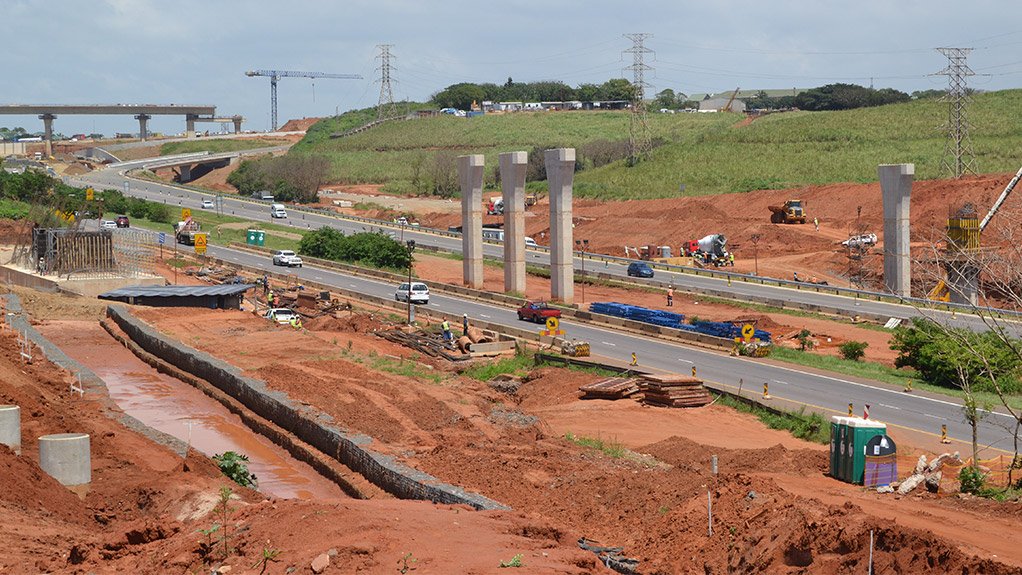Construction of GO!Durban, eThekwini’s integrated rapid public transport network (IRPTN), is gathering momentum with the second phase of the project under way.
GO!Durban head of infrastructure roll-out Carlos Esteves told attendees at a public briefing in Umhlanga, in KwaZulu-Natal, on Tuesday that construction had started on the bridge crossing the N2 highway heading to the King Shaka International Airport.
The route, which links Bridge City with Gateway, Umhlanga, is expected to take three to four years to complete.
The bridge, which was initially expected to be finished ahead of the South African National Roads Agency’s Umhlanga Interchange but has experienced delays, is expected to take nine months to build.
The first phase, the C3 corridor linking Bridge City and central Pinetown, is almost complete.
The entire IRPTN, which comprises nine corridors, is expected to be operational by 2027. Valued at R22-billion, it is the eThekwini municipality’s largest and most ambitious infrastructure project to date.
Esteves said the objective was to implement a world-class network of road and rail transport that would provide at least 85% of Durbanites with efficient and cost-effective transport.
In particular, he said, it was important to integrate both road and rail as rail was the preferable mode of transport in some areas. Both services would share the same ticketing system and provide the same standard of transport.
Smaller vehicles, including existing taxis, would service feeder routes leading to stations along the main trunk system. This would comprise dedicated bus lanes cordoned off by barriers to prevent other vehicles from using them.
He said the eThekwini municipality was about to start construction on a prototype station.
Each closed station would have basic ablution and ticketing facilities and be universally accessible in terms of building regulations.
The municipality would start by levelling large areas. “This is challenging because Durban is anything but flat,” he said, adding that substantial platforms would need to be built leading to stations to allow boarding at ground floor level.
He said stations would be “substantial buildings” and would be designed to facilitate the rapid movement of large numbers of people and prevent queuing.
They will be located in the centres of roads to prevent the turning of vehicles.
Initially, both pedestrian and vehicle crossings would be managed with traditional traffic lights, as modelling had shown that the pre-emptive system that would ultimately be put in place was not yet needed.
Esteves said that a number of innovative town planning and joint business initiatives along the route were already being planned. One, on the C9 route, was an eye running down Cornubia Boulevard. The station would be embedded in a mixed use development which would include high rise buildings.
He said that the municipality was looking to “change land use” at all major station nodes.
Esteves apologised to businesses along the C3 route and particularly in Pinetown and New Germany for poor communication during construction and said that lessons learnt during this first phase would enable the municipality and construction companies to interact with business to the north more effectively.
Questioned about potential disruptions from the taxi industry which could potentially be compromised by GO!Durban, Esteves said that the business model that had been put in place would integrate bus and taxi operators into the business that would run the operation.
In the interim, a team had been put in place to work with taxi industry representatives to “avert blockages”.
However, he cautioned that this was a “large industry with its own challenges” and that some arm wrestling could be expected.
Edited by: Creamer Media Reporter
EMAIL THIS ARTICLE SAVE THIS ARTICLE
To subscribe email subscriptions@creamermedia.co.za or click here
To advertise email advertising@creamermedia.co.za or click here













